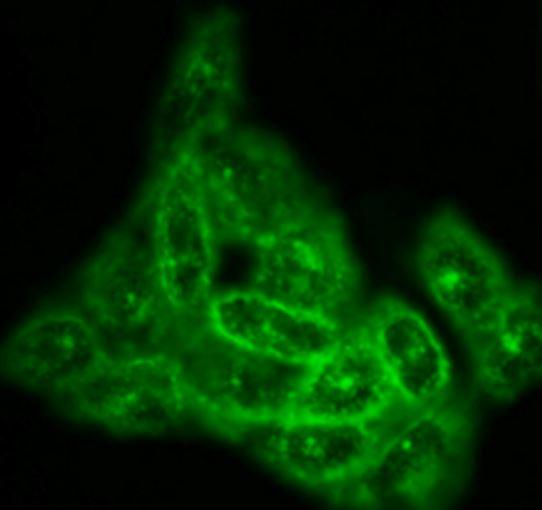Most of what we learn about cholesterol concerns its involvement in heart disease and
clogging up arteries. However, the waxy, fat-like substance also plays a vital role in growth of
cells and is an essential building block in their production of steroids and hormones.

Cholesterol – here in hamster ovary cells – is a building block of
steroid hormones that trigger puberty and support pregnancy.
Image credit: D. Ory
Now, a new study from Washington University School of Medicine in St. Louis, MO, reveals how
a key molecule that controls the trafficking of cholesterol inside cells affects their ability
to make steroid hormones that support pregnancy and trigger puberty.
Writing in the journal Cell Metabolism, the researchers say their findings offer
important clues about the causes of infertility and drivers of early puberty, especially in
girls.
They suggest too much of the key molecule likely impairs proper steroid hormone
production, resulting in infertility, while too little could lead to premature sexual
maturation.
The key molecule they identified is a small strand of RNA from a class known as small
nucleolar RNA, or snoRNA. Its name is U17 snoRNA.
Daniel S. Ory, senior author and professor of medicine, says he and his colleagues were
surprised by their findings because, typically, snoRNAs are involved in the production of proteins
and are not well known for doing other things such as influencing the production of
steroids.
“This is one of several hundred snoRNAs,” he notes, “Clearly, some of them have functions
beyond the traditional understanding of snoRNAs, and perhaps they should be studied more
systematically.”
U17 snoRNA levels decline from birth to maturity
Previously, the team had found high levels of U17 snoRNA in the ovaries and testes of mice.
These organs make steroid hormones like progesterone and testosterone.
In the new study, they showed that at birth, mice have high levels of U17 snoRNA, which
gradually decline as the animals grow and mature.
When the mice reach sexual maturity – at 8 weeks – U17 snoRNA levels are very low and this
increases production of steroid hormones.
Prof. Ory explains what this might mean:
“The ovaries need to make steroids to support pregnancy when the mice reach sexual
maturation. So we think this small RNA is at least one of the regulators of the processes that
govern when a mouse becomes fertile.”
For the next phase of the study, the team took a look inside hamster ovary cells, paying particular attention to cholesterol and mitochondria.
Mitochondria are the tiny factories that produce units of chemical energy for fueling cell
activity. But they also have another role – they make steroids, using cholesterol as the main
ingredient.
Prof. Ory and colleagues found that in cells lacking U17 snoRNA, the cholesterol was
ushered into the cell’s mitochondria. But in cells that had an abundance of U17 snoRNA, the
cholesterol did not reach the mitochondria, and without their raw material, the cells did not
make any steroids.
The team found when they tweaked U17 snoRNA levels in normal, immature mice, it allowed
cholesterol to travel to the mitochondria, triggering steroid production in the mouse
ovaries.
Could hormone-like environmental chemicals affect puberty and fertility?
Prof. Ory says they have yet to test whether these early-puberty mice are able to breed, “but
we certainly increased levels of pregnenolone and progesterone, which are steroids necessary to
support pregnancy.”
He says he and his colleagues plan to investigate U17 snoRNA further and look at how it works
with proteins to increase or decrease cholesterol trafficking into mitochondria and subsequent
steroid production.
The findings should also prompt further investigation into how hormone-like
chemicals in our environment might affect puberty and fertility, notes Prof. Ory:
“There are environmental cues that might be involved. We need to work with our
colleagues in fertility research as we think about future directions for this
work.”
Meanwhile, Medical News Today recently learned about another new cell discovery that may explain some ovarian disorders. In the
journal Nature Communications, National Institutes of Health researchers reveal that
theca cells – essential for making hormones that support ovarian follicle growth – come from two
sources, one inside and the other outside the ovary.
Written by Catharine Paddock PhD